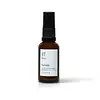What's inside
What's inside
 Key Ingredients
Key Ingredients

 Benefits
Benefits

 Concerns
Concerns

 Ingredients Side-by-side
Ingredients Side-by-side

Water
Skin ConditioningButylene Glycol
HumectantGlycerin
HumectantIsononyl Isononanoate
EmollientDiisostearyl Malate
EmollientPEG-20 Methyl Glucose Sesquistearate
EmulsifyingPhenoxyethanol
PreservativeAcrylates/C10-30 Alkyl Acrylate Crosspolymer
Emulsion StabilisingDipotassium Glycyrrhizate
HumectantChlorphenesin
AntimicrobialBisabolol
MaskingXanthan Gum
EmulsifyingPotassium Hydroxide
BufferingRetinyl Palmitate
Skin ConditioningDisodium EDTA
Helianthus Annuus Seed Oil
EmollientAloe Barbadensis Leaf Juice
Skin ConditioningMaltodextrin
AbsorbentPolysorbate 20
EmulsifyingCaprylic/Capric Triglyceride
MaskingHydroxypropyl Cyclodextrin
MaskingRetinol
Skin ConditioningPotassium Sorbate
PreservativeSodium Benzoate
MaskingSodium Metabisulfite
AntioxidantTocopherol
AntioxidantBHT
AntioxidantWater, Butylene Glycol, Glycerin, Isononyl Isononanoate, Diisostearyl Malate, PEG-20 Methyl Glucose Sesquistearate, Phenoxyethanol, Acrylates/C10-30 Alkyl Acrylate Crosspolymer, Dipotassium Glycyrrhizate, Chlorphenesin, Bisabolol, Xanthan Gum, Potassium Hydroxide, Retinyl Palmitate, Disodium EDTA, Helianthus Annuus Seed Oil, Aloe Barbadensis Leaf Juice, Maltodextrin, Polysorbate 20, Caprylic/Capric Triglyceride, Hydroxypropyl Cyclodextrin, Retinol, Potassium Sorbate, Sodium Benzoate, Sodium Metabisulfite, Tocopherol, BHT
Water
Skin ConditioningGlycerin
HumectantCyclopentasiloxane
EmollientCaprylic/Capric Triglyceride
MaskingDimethicone
EmollientGlyceryl Stearate
EmollientCeteareth-20
CleansingCetearyl Alcohol
EmollientGlucosamine
Silver
Cosmetic ColorantLactic Acid
BufferingPEG-100 Stearate
Triethanolamine 1%
BufferingPhenoxyethanol
PreservativeButyrospermum Parkii Butter
Skin ConditioningEthylhexylglycerin
Skin ConditioningChitosan
Limonene
PerfumingAllantoin
Skin ConditioningCitrus Tangerina Peel Oil
MaskingCitrus Aurantium Bergamia Peel Oil
Citrus Grandis Peel Oil
MaskingCitrus Aurantium Dulcis Peel Oil
MaskingCitral
PerfumingLinalool
PerfumingSilver Chloride
PreservativeCitronellol
PerfumingGeraniol
PerfumingWater, Glycerin, Cyclopentasiloxane, Caprylic/Capric Triglyceride, Dimethicone, Glyceryl Stearate, Ceteareth-20, Cetearyl Alcohol, Glucosamine, Silver, Lactic Acid, PEG-100 Stearate, Triethanolamine 1%, Phenoxyethanol, Butyrospermum Parkii Butter, Ethylhexylglycerin, Chitosan, Limonene, Allantoin, Citrus Tangerina Peel Oil, Citrus Aurantium Bergamia Peel Oil, Citrus Grandis Peel Oil, Citrus Aurantium Dulcis Peel Oil, Citral, Linalool, Silver Chloride, Citronellol, Geraniol
Ingredients Explained
These ingredients are found in both products.
Ingredients higher up in an ingredient list are typically present in a larger amount.
This ingredient is an emollient, solvent, and texture enhancer. It is considered a skin-softener by helping the skin prevent moisture loss.
It helps thicken a product's formula and makes it easier to spread by dissolving clumping compounds.
Caprylic Triglyceride is made by combining glycerin with coconut oil, forming a clear liquid.
While there is an assumption Caprylic Triglyceride can clog pores due to it being derived from coconut oil, there is no research supporting this.
Learn more about Caprylic/Capric TriglycerideGlycerin is already naturally found in your skin. It helps moisturize and protect your skin.
A study from 2016 found glycerin to be more effective as a humectant than AHAs and hyaluronic acid.
As a humectant, it helps the skin stay hydrated by pulling moisture to your skin. The low molecular weight of glycerin allows it to pull moisture into the deeper layers of your skin.
Hydrated skin improves your skin barrier; Your skin barrier helps protect against irritants and bacteria.
Glycerin has also been found to have antimicrobial and antiviral properties. Due to these properties, glycerin is often used in wound and burn treatments.
In cosmetics, glycerin is usually derived from plants such as soybean or palm. However, it can also be sourced from animals, such as tallow or animal fat.
This ingredient is organic, colorless, odorless, and non-toxic.
Glycerin is the name for this ingredient in American English. British English uses Glycerol/Glycerine.
Learn more about GlycerinPhenoxyethanol is a preservative that has germicide, antimicrobial, and aromatic properties. Studies show that phenoxyethanol can prevent microbial growth. By itself, it has a scent that is similar to that of a rose.
It's often used in formulations along with Caprylyl Glycol to preserve the shelf life of products.
Water. It's the most common cosmetic ingredient of all. You'll usually see it at the top of ingredient lists, meaning that it makes up the largest part of the product.
So why is it so popular? Water most often acts as a solvent - this means that it helps dissolve other ingredients into the formulation.
You'll also recognize water as that liquid we all need to stay alive. If you see this, drink a glass of water. Stay hydrated!
Learn more about Water